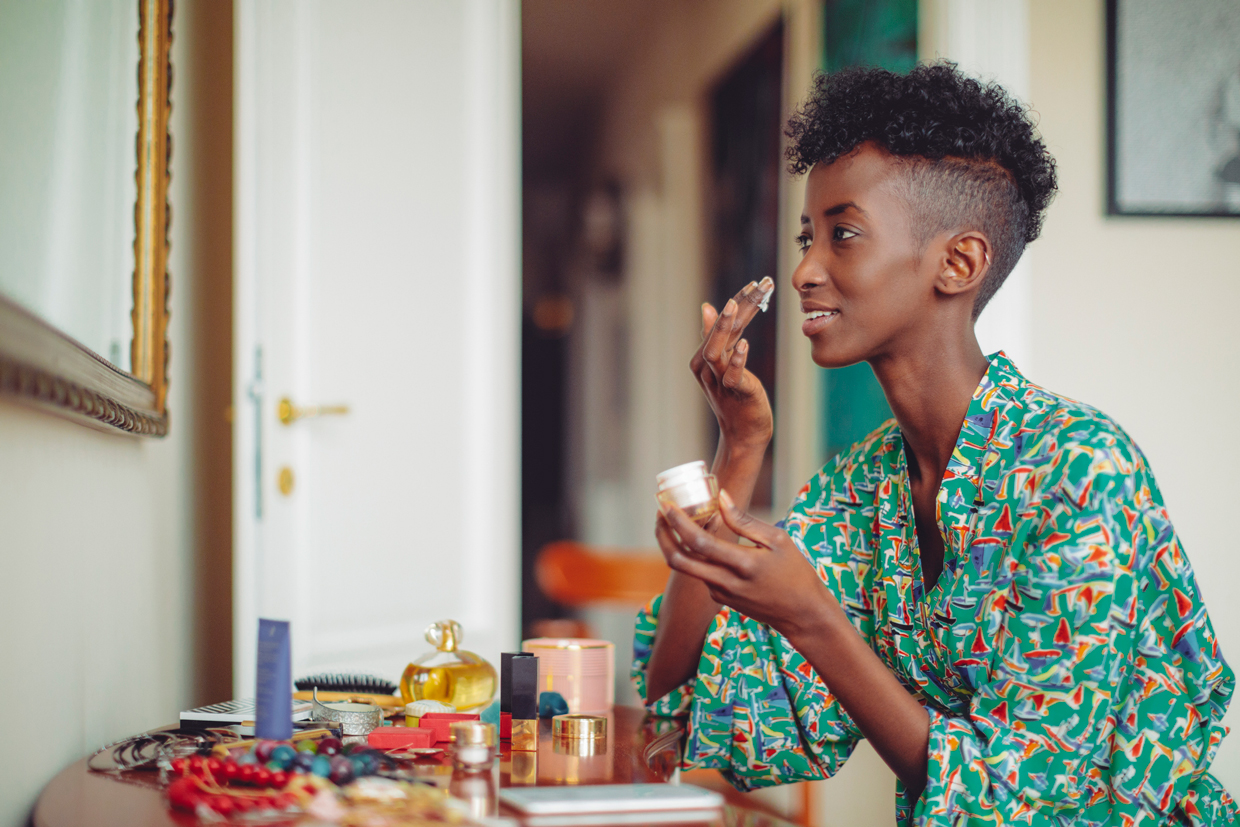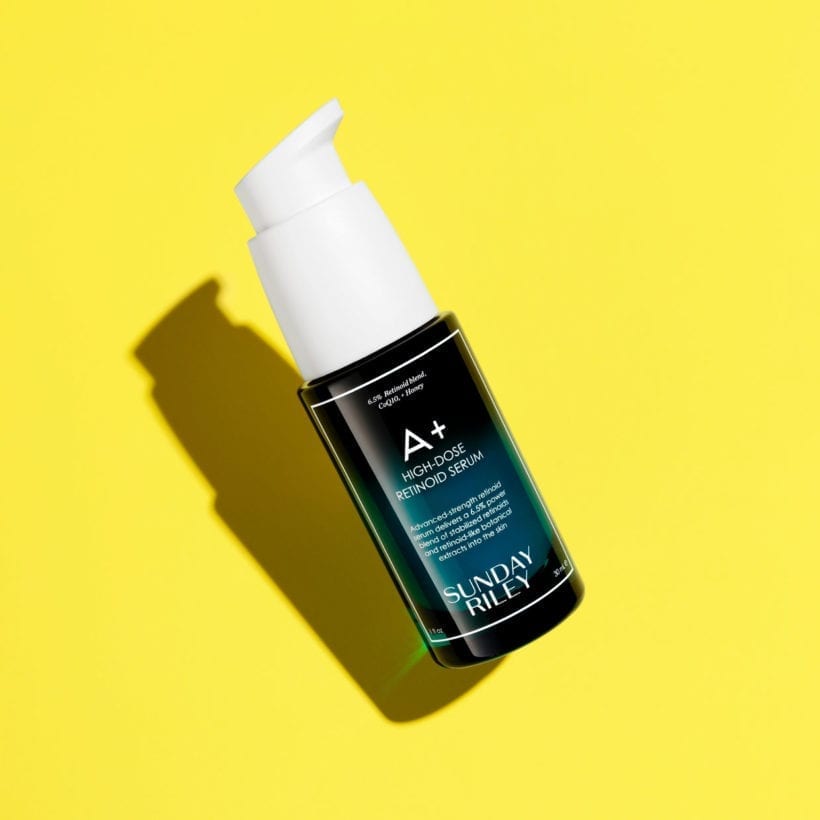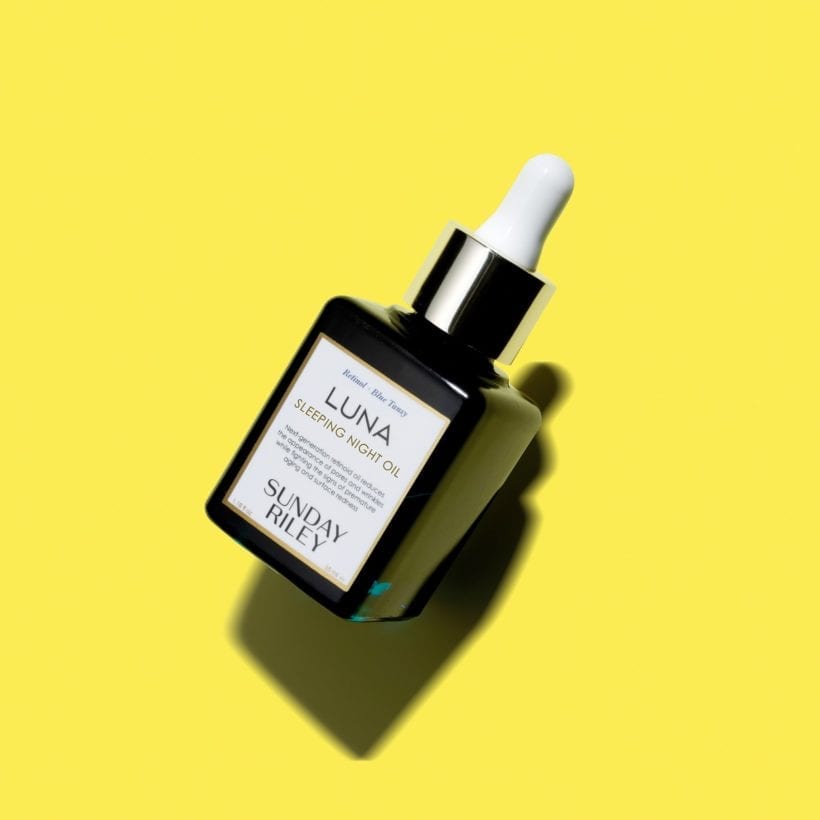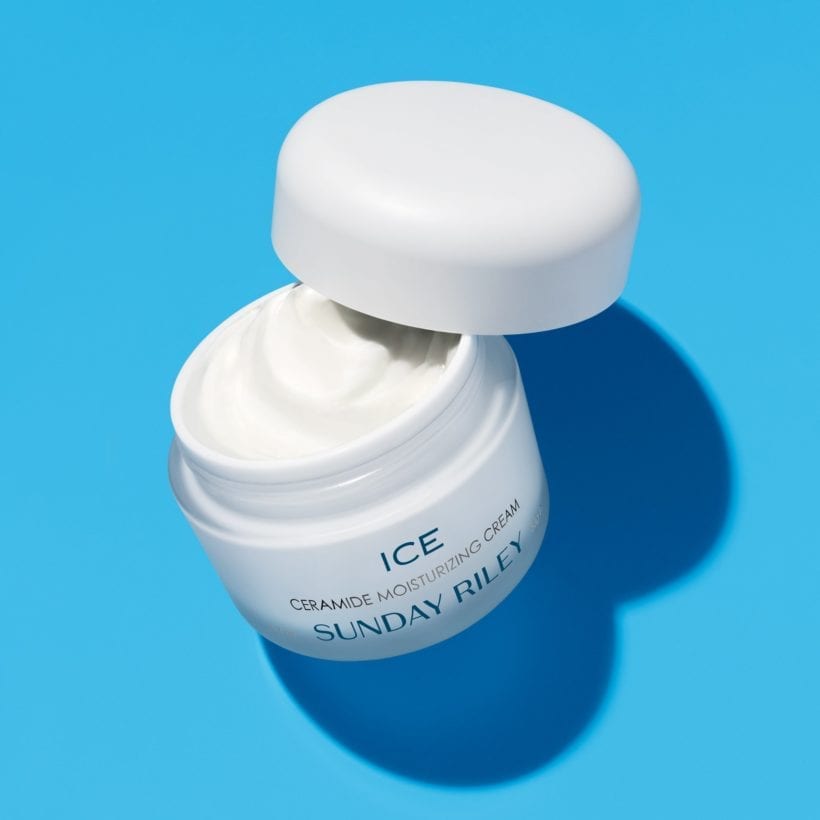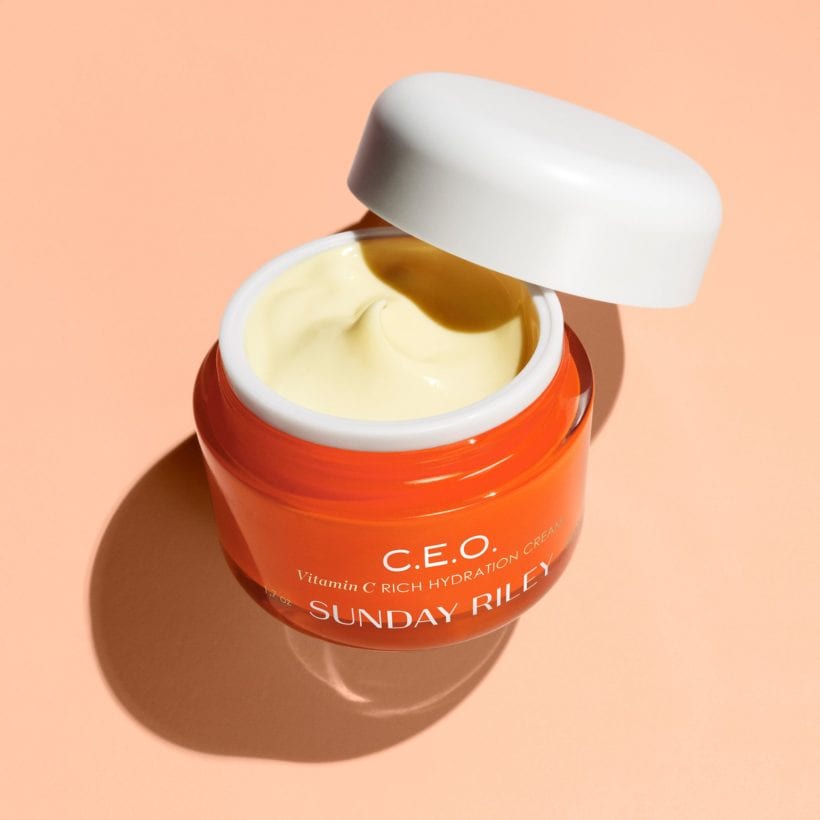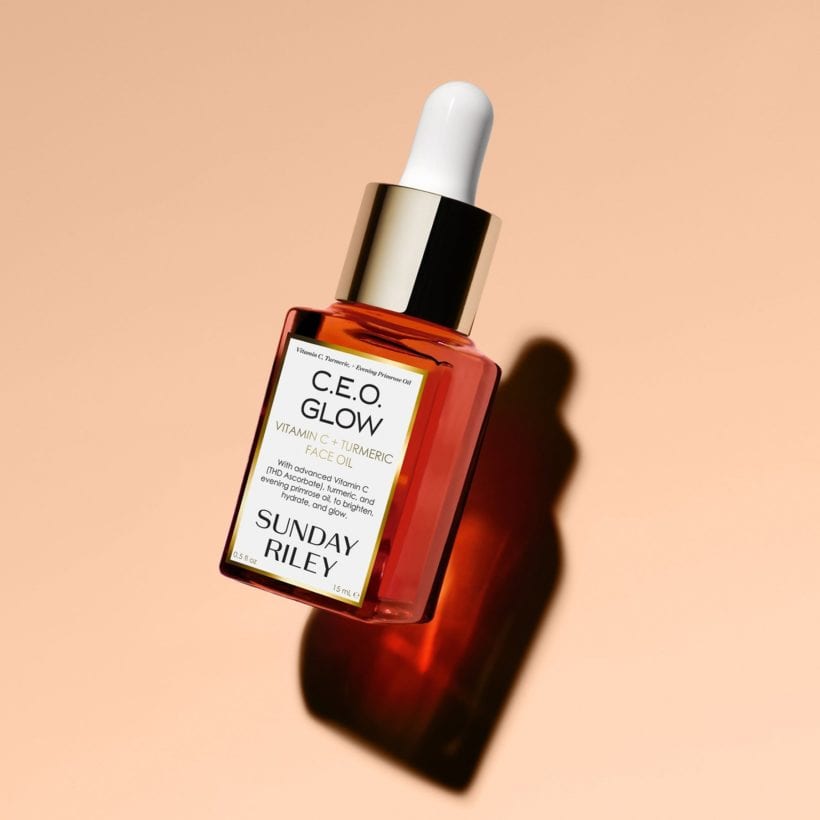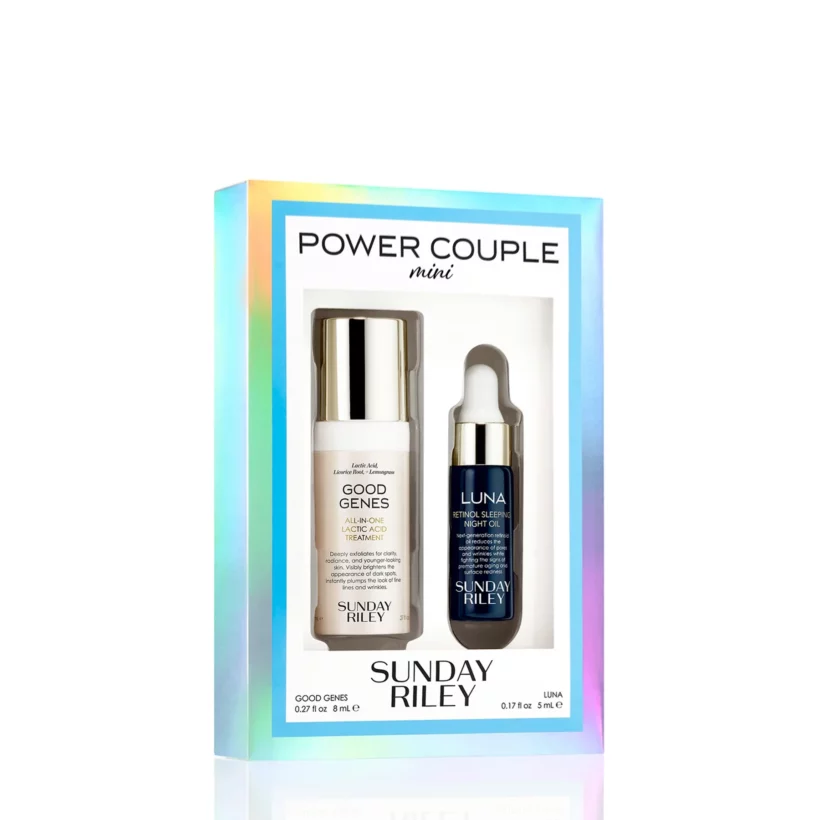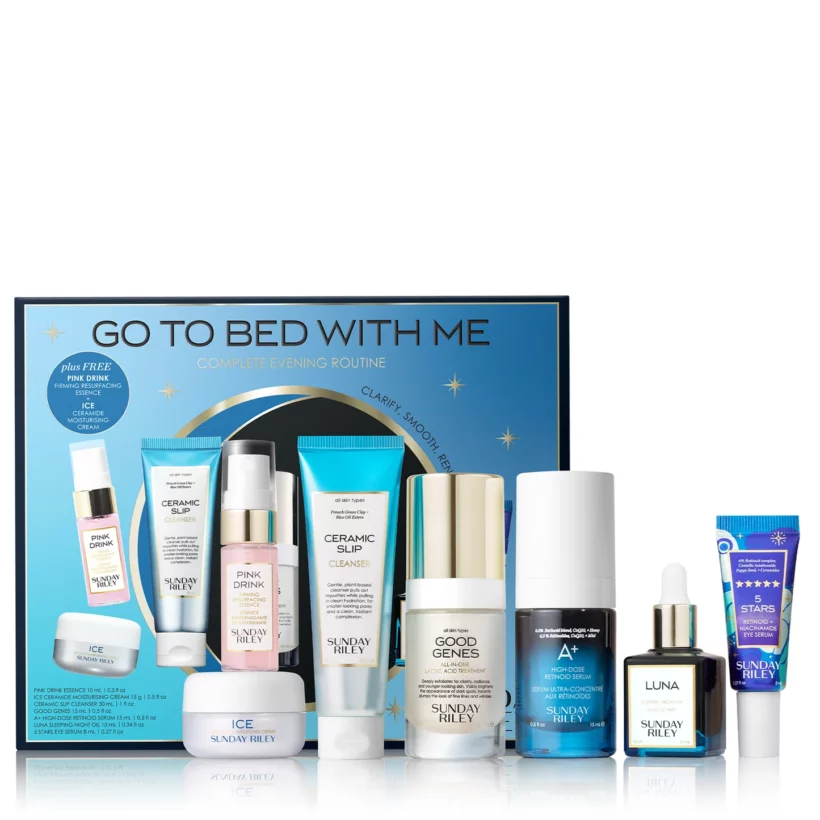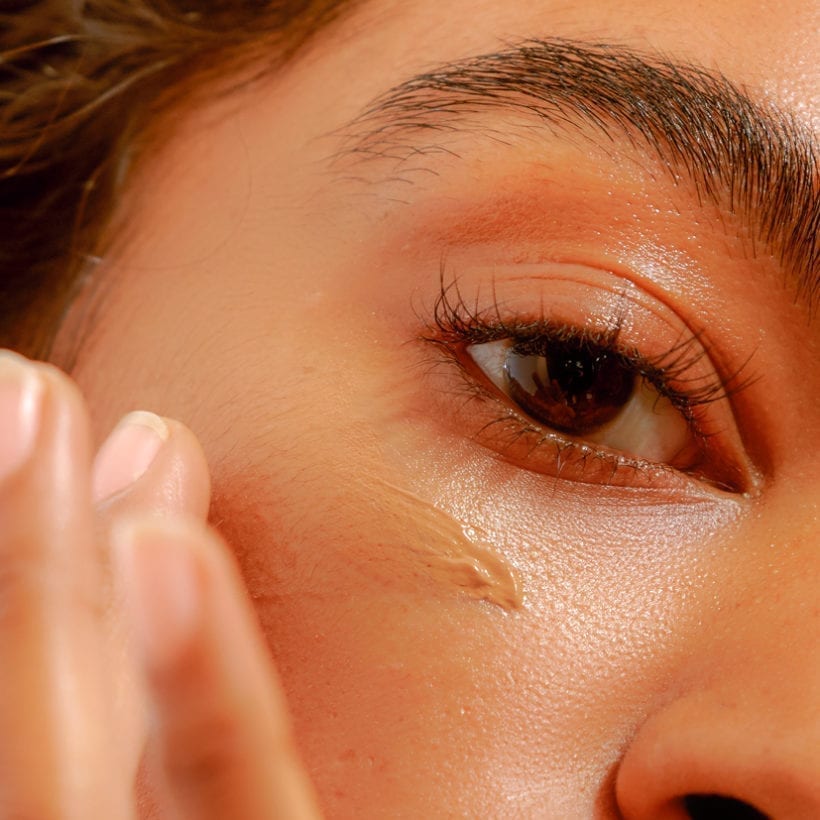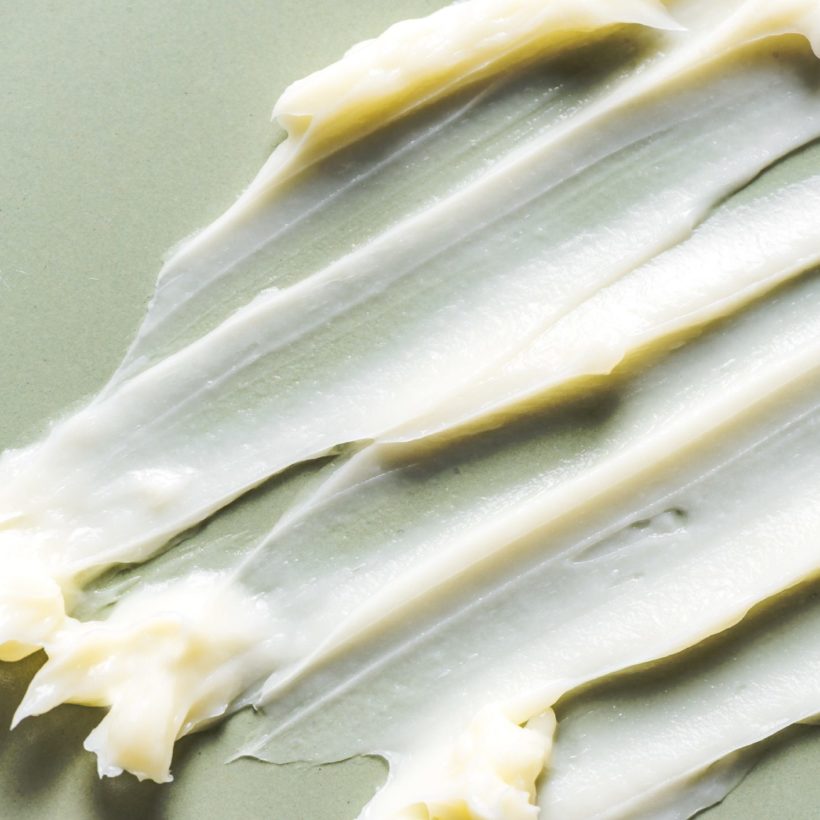Retinol is an anti-aging must-have, but there are plenty of right and wrong ways to use it. Suppose you haven’t been adequately schooled in how to use retinol properly. In that case, there’s a lot to unpack here, and it goes beyond just applying a thin layer to the skin and letting it work its magic — how you use it, its concentration, what to pair it with, and what to avoid. Still, specific rules do apply, like always using sunscreen and even buffering it with a good moisturizer, amongst other pertinent directions, which are essential not to gloss over to ensure a good result.
Meet the Experts
Sunday Riley , CEO, founder and product formulator
Dr. Blair Murphy-Rose is a board-certified dermatologist in New York City.
Dr. Elizabeth Houshmand is a board-certified dermatologist in Dallas, TX.
Why Everyone Loves Retinol
If there’s one skincare ingredient that pretty much does it all, it’s retinol. From improving the appearance of fine lines by stimulating collagen production to reducing acne and pigmentation and even enhancing the rate of skin cell turnover, this anti-aging gold standard is the secret to a healthy complexion. Dermatologists and skincare experts swear by it, but how does this miracle ingredient work? And why, unlike other skincare ingredients, does it necessitate some rather stringent guidelines?
Retinol is a synthetic derivative of vitamin A, which works by latching onto receptors in the skin which signal a host of actions, the main one being promoting healthy and more normalized skin cell turnover. As a result, the skin speeds up its natural rate of exfoliation and quickly removes dead skin cells from both the skin’s surface and from within the pores. Without retinol, the skin still sheds its dead cells, but the process is faster and more efficient with it. 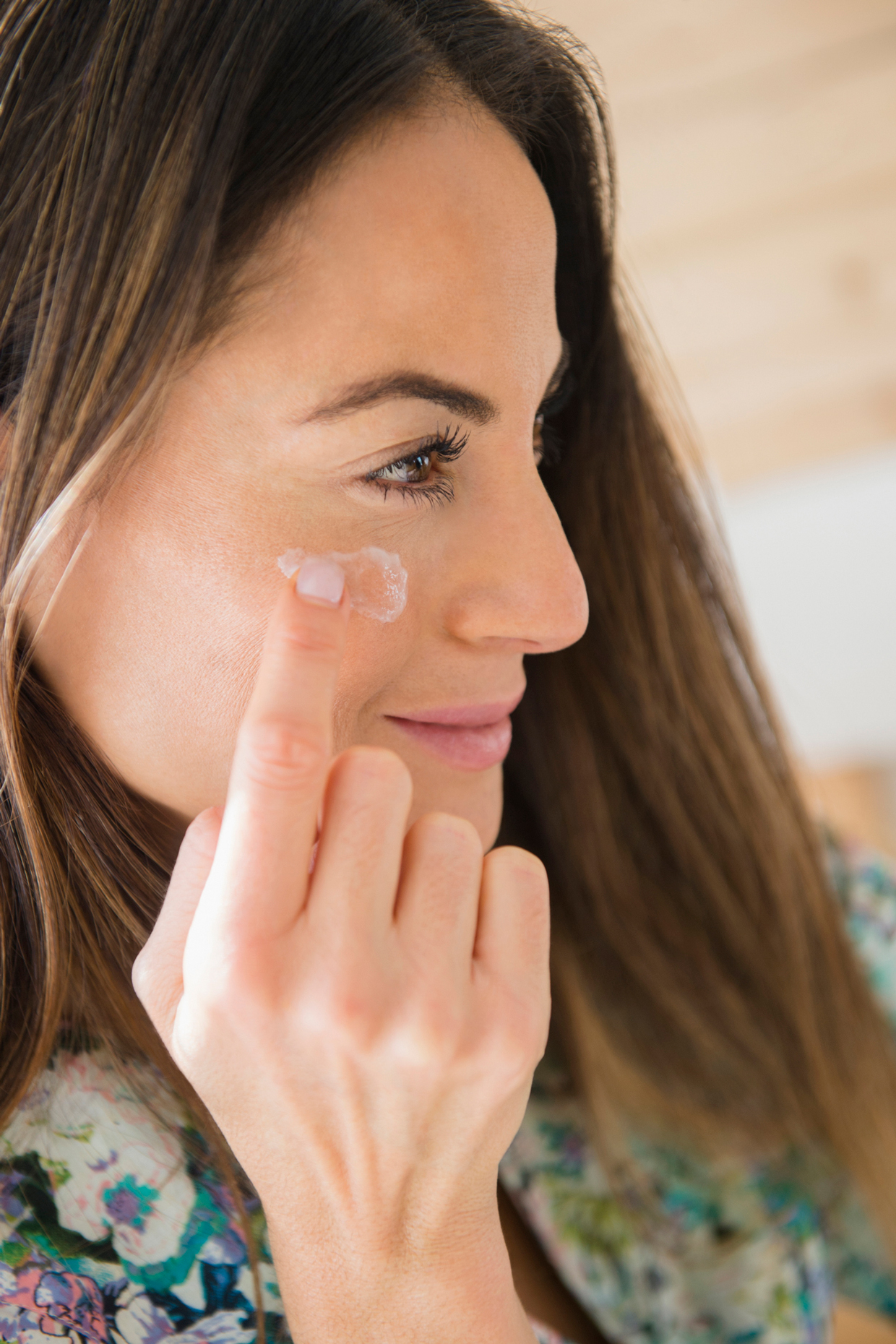
Retinol is a member of the retinoid family. There’s retinol, retinal, adapalene, tretinoin, retinol palmitate, retinol esters. They all have different abilities. They’re not all created equal and some are more irritating than others.
“We all know about the impact of retinoids and that they’re great for skin, but it’s really important to know the type you’re looking for. And I always say I’m looking for transformation with no downtime. That’s why I used trans-retinol in the Luna Sleeping Night oil formula, it belongs to a class of chemical compounds termed retinoids, it’s the potent ester of all-trans retinoic acid. Retinoid ester blend 5% and liposome-encapsulated retinol blend 1% that you can find in A+ High-Retinoid serum, they are incredibly bio-viable and less irritating to the skin than other forms of retinoids that you’re going to have,” explains Sunday Riley, CEO, founder and product formulator.
With so many options to choose from within the world of retinol and retinoids, it can be somewhat confusing to navigate the different names, formulations, and concentrations. Simply put, there are over-the-counter versions, like retinol, which does not need a prescription and takes a little longer to work due to the concentration and the fact that the skin needs to convert it to retinoic acid. On the other hand, retinoids, which require a prescription, are more potent in strength and tend to work faster since the skin doesn’t need to convert them to retinoic acid — they’re already in that format straight out of the tube.
‘Retinol offers many advantages, like building collagen, increasing elasticity, treating fine lines, improving texture, tone, and discoloration, minimizing the appearance of pores, and decreasing oil and sebum production,’ says Dr. Blair Murphy-Rose, a board-certified dermatologist in New York City. Despite all of its good-for-the-skin benefits, unfortunately, retinol is notorious for its unwanted side effects, too, like skin irritation, redness, peeling, and increased sun sensitivity. “Often, you can manage these effects by using the ingredient properly,” she adds. Even so, some patients sometimes worry that retinol will ‘thin their skin’, which, Dr. Murphy-Rose says, it won’t. “Instead, it works to thicken the dermis by increasing collagen, which helps to achieve healthy, glowing, and more youthful skin,” adds Riley.
The Retinol Rules Never to Break
1. Newbies should always start slow

Retinol and retinoids should always be used gradually. As Sunday Riley explains, it is best to start slow and increase the usage or potency as tolerated with any vitamin A-derived topical. “Doing so helps reduce skin irritation, peeling, and even breakouts,” she says.
Not all the retinol products are created equally. ‘If you are new to retinols, Luna Night Oil is the one to start. Luna is really powerful for your skin but incredibly gentle. If you’ve ever had any reactions to active ingredients or you have sensitive skin, that’s your go-to product. It’s infused with a low dose of trans-retinol. It can be used every night without irritation; it’s like a baby retinol. Being in an oil helps to protect the integrity of the ingredient and slows down the infusion rate into your skin. Luna got its name because it’s a nighttime sleeping oil. It’s really soothing to the skin, but also soothing to your mind. Our oils are not just oils, it’s your serum and your oil in one. So you’re going to get that retinol boost to your skin, but then you have these soothing essential oils in there that you can smell, like blue tansy, German camomile, and Cape camomile. They are wonderful for soothing the look of surface redness and giving the product a blue color. It’s something that I love to put on before I go to bed. I apply it into the palm of my hand, rub it together, and then rub it into my skin as it goes from blue to clear. That’s why I know I rub the retinoid into my skin effectively. You are waking up flawless’, says Sunday.
Luna Sleeping Night Oil is clinically proven to improve skin radiance, fine lines, and smoothness in 4 weeks.* After an independent consumer testing panel used Luna Sleeping Night Oil for four weeks:
- 100% felt the product absorbed well into the skin
- 96% of women felt their skin looked brighter and more radiant
- 96% of women felt their skin looked healthier and revitalized
*Proven via in-vivo testing (silicone replicas) and expert visual grading.
When starting with any retinol, pay attention to your skin and choose the right product for your skin. “Once the skin starts to adjust to it, you can carefully increase the frequency as tolerated,” Dr. Murphy-Rose suggests. For example, you can use Sunday Riley advanced-strength retinoid serum A+ for two days on and two days off, eventually working up to every other day and then daily. ‘A+ is significantly stronger than Luna. And with creating a balanced formula, you get all the benefits of having a high dose transformative retinol serum without all the drawbacks and side effects. I think anyone interested in retinoids will really love this product, because they’re going to see results right away, no matter what their concern is. Then they can customize how they use the product to get the results that they want to see’, says Sunday.
In an independent study, A+ Serum showed improvement in the appearance of skin tone evenness and calmness after one week.
In an independent blinded study of 102 people, after four weeks:
- 90% of people saw boosted radiance and agreed the product was gentler than other facial retinoid serums used in the past
WE RECOMMEND: Apply 1-2 pumps in the evening to clean, dry skin. For targeted instructions, see below:
FOR NEW RETINOID USERS: Use two days on, two days off. Work your way up to every other day, then to daily, evening use. Follow with a gentle oil or moisturizer, like C.E.O. Glow or Juno. Use an AHA serum, like Good Genes Lactic Acid Treatment, on alternate nights to sweep away dead skin cells.
FOR ADVANCED RETINOID USERS: Use daily, in the evenings. Follow with a gentle oil or moisturizer, like C.E.O. Glow or Juno. Use an AHA serum, like Good Genes Lactic Acid Treatment, in the mornings to sweep away dead skin cells that come to the surface.
FOR SENSITIVE SKIN: Apply a few drops of a gentle, moisturizing oil, like C.E.O. Glow or Juno to your skin before applying A+ Serum.
You can also use Luna and A+ together, mixing them in the palm of your hand. It helps the product to sink in even deeper.
2. Always layer it between a moisturizer
One of the adverse side effects of retinol is the flaking and dryness that come with it, which can occur with retinol virgins and experienced multi-year users. But applying moisturizer (preferably one with mega-hydrators in it, like Sunday Riley ICE Ceramide Moisturizing Cream to lock in moisture) can help majorly. ‘When I’m using retinol products, I’m also always thinking about my moisture barrier and my microbiome,” says Sunday. “Layering retinol in between two layers of moisturizer can reduce redness, sensitivity, peeling, flaking, and dryness that is often associated with vitamin A,” explains Dr. Elizabeth Houshmand, a board-certified dermatologist in Dallas, TX. That’s because the moisturizer acts as a buffer of sorts to prevent and diminish the potential for redness, irritations, sensitivities, dryness, and peeling. Plus, using moisturizer in tandem with retinol — there are oil formulations, like Sunday Riley Luna Sleeping Night Oil for the added benefit of hydration — helps the skin to function optimally so that the retinol can penetrate as designed and work towards optimal results.
3. Never, ever go without sunscreen
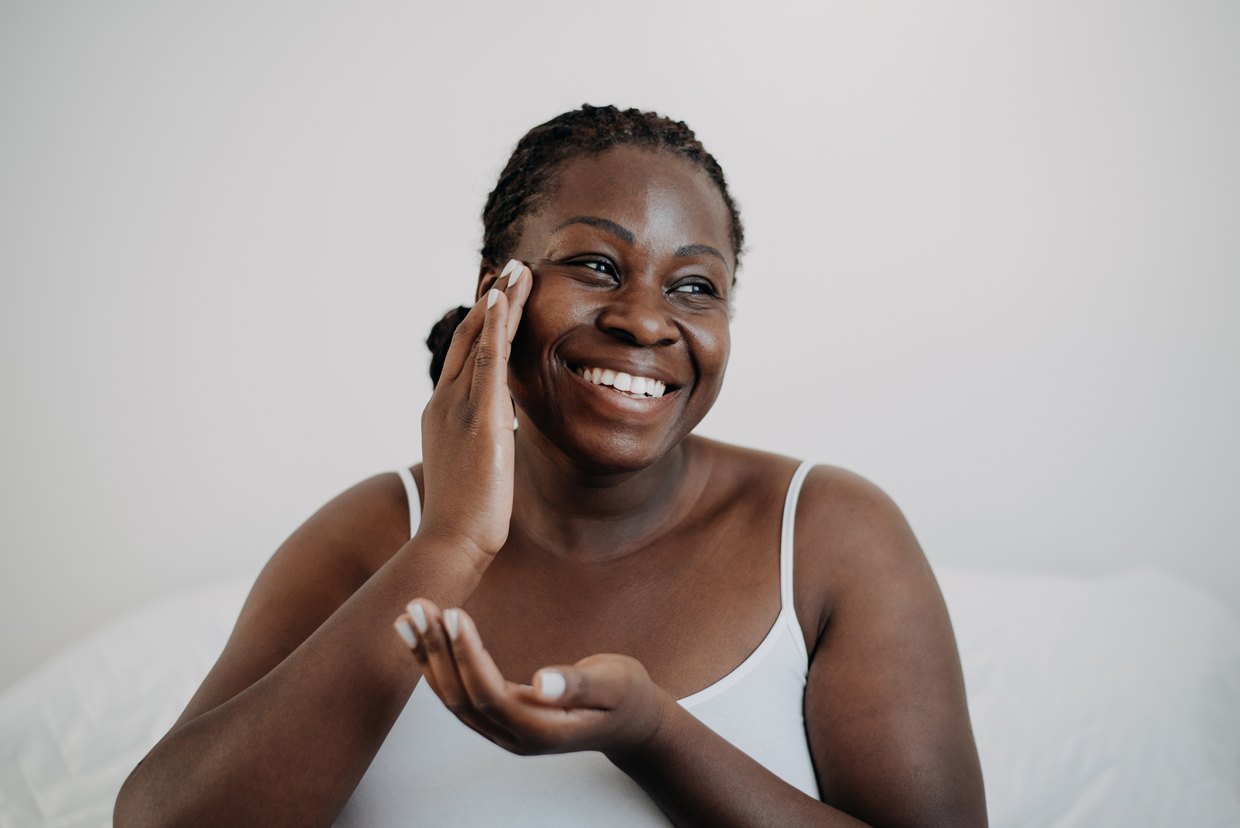
There are a lot of important rules when it comes to using retinol, but the one that is perhaps most imperative to oblige with is the use of sunscreen. You should only apply retinol to the skin at night (the sun can increase the risk of sunburns and damage); this is one decree you won’t want to ignore. Using retinol without adequate daily sun protection is a surefire way to wind up with a sunburn. That’s because retinol reduces the skin’s ability to protect itself naturally from damaging factors like the sun. “It is always important to use sun protection, no matter what other skincare products you are using, but even more so if you are using ingredients that heighten photosensitivity,” Sunday adds. Most experts recommend using sunscreens with SPF 30 or higher.
4. Don’t start mixing and matching retinol and other skincare products without knowing what works and what doesn’t
‘Our ‘power of three’ philosophy incorporates three key ingredients into your skincare routine for transformative results: AHAs, vitamin C, and, of course, retinol. Retinol, a potent derivative of vitamin A, accelerates the turnover of skin cells, promoting the emergence of fresh, new cells from beneath. This process is effectively complemented by AHAs, which act like gentle scrubbing bubbles, meticulously exfoliating the surface of the skin to remove dead cells and impurities. This exfoliation prepares the skin perfectly for the introduction of THD ascorbate, a superior form of vitamin C. Known for its powerful antioxidant properties and minimal irritation, THD ascorbate penetrates deeply to fortify the skin against environmental damage while boosting brightness and collagen production. Together, these ingredients harmonize to enhance skin texture and tone, culminating in a clearer, more youthful complexion,’ explains Sunday.
‘I think there’s a lot of misconception about products with vitamin C and retinoids. But as long as I leave them plenty of time between applications, they do play well together. And I love using an alpha hydroxy acid with my retinoid because it will reduce flakiness. Generally, vitamin C is most beneficial during the day to protect against environmental stressors, and retinol is best used at night to repair and restore,’ says Sunday.
5. Choose the right, gentle exfoliator
“Starting your skincare routine with the right gentle exfoliator can make all the difference,” says Sunday Riley about Good Genes All-in-One Lactic Acid treatment. This daily AHA treatment is designed not only to exfoliate but also to plump and brighten the skin with minimal irritation. Clinically tested and proven, Good Genes delivers remarkable results swiftly, significantly improving the appearance of lines and wrinkles in just 3 minutes, as evidenced by profilometry analysis. In consumer studies, 100% of women reported that their skin looked and felt significantly smoother and more radiant, and they noted visibly reduced lines and wrinkles.
‘A power-packed pair — Good Genes and Luna, this duo combines the power of lactic acid (an AHA) and retinol ester to exfoliate and brighten the skin for a visibly smoother, more radiant-looking complexion. When used together, this duo reveals more radiant, smoother-looking skin while visibly brightening the appearance of dark spots and discoloration,’ says Sunday.
After cleansing, apply 3-4 drops of Luna at night to dry skin. Luna Sleeping Night Oil goes from blue to clear when massaged into the skin. Follow with 1-2 pumps of Good Genes Lactic Acid Treatment. Alternatively, you can use Good Genes Lactic Acid Treatment in the morning and Luna Sleeping Night Oil at night or on alternate evenings.
6. Don’t use retinol products if you are pregnant or breastfeeding.
When it comes to skincare during pregnancy or while breastfeeding, it’s essential to prioritize safety. Dermatologists strongly advise against using retinol products during these sensitive times due to potential risks to the baby. Instead, expectant and new mothers should consider an effective and safe skincare routine. A well-curated regimen that excludes retinol can still nourish and protect the skin without compromising health. For those looking for alternatives, there are many pregnancy-safe products that cater to various skin needs without the use of retinol.
7. Don’t be scared to use retinol eye cream.
‘Retinol, a powerful skincare ingredient, is not recommended for use directly around the delicate eye area, where the skin is thinner and more sensitive. However, when properly formulated for this sensitive region, retinol can be immensely beneficial. For 5 Stars, it was of the utmost importance for me to create a retinoid eye serum for our line-up to complete the evening routine. With the increase in mask-wearing due to COVID-19, I felt there was a larger focus on the eye area, so when we launched, it seemed like the right time to innovate in the eye category and extend our retinol range’, explains Sunday.
Targeted and gentle anti-aging treatment for the delicate eye area, this wrinkle-fighting serum is powered by a 6% retinoid complex and bioactive centella asiatica to support healthy collagen. Balanced with poppy seed extract and ceramides to soothe, smooth, and nurture the eye area while olive oil and shea butter rehydrate for overnight restoration. Apply daily in the evenings, before or after moisturizer. Using the wand, lightly tap a pearl-sized amount onto the eye area and massage outwards around the outer crow’s feet, under the eye, and between brow bone and eyebrow for better product absorption and circulation in this area. This method not only improves the cream’s efficacy but also helps de-puff and refresh the under-eye area.
HOW TO USE
- After patting your skin dry, mist PINK DRINK onto your face, massage into your skin and let dry.
- Follow with 1-2 pumps of GOOD GENES to the face and neck.
- Next, apply 1-2 pumps of A+ SERUM to your face and neck, followed by 3-4 drops of LUNA (or mix them together and apply as a skin cocktail).
- Using your ring and middle fingers, lightly tap a pearl-sized amount of 5 STARS onto the eye area and massage outwards around the outer crow’s feet, under the eye, and between brow bone and eyebrow.
- Before bed, massage in ICE onto the face, neck, and décolleté to lock in moisture.
We only recommend products we have independently researched, tested, and loved. If you purchase a product found through our links, Sunday Edit may earn an affiliate commission.
